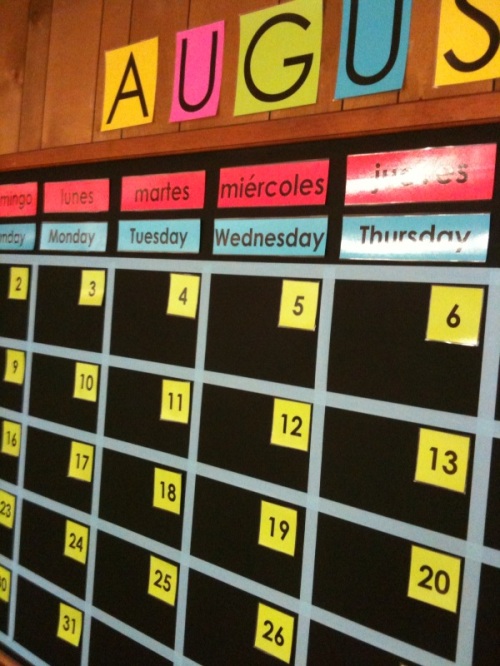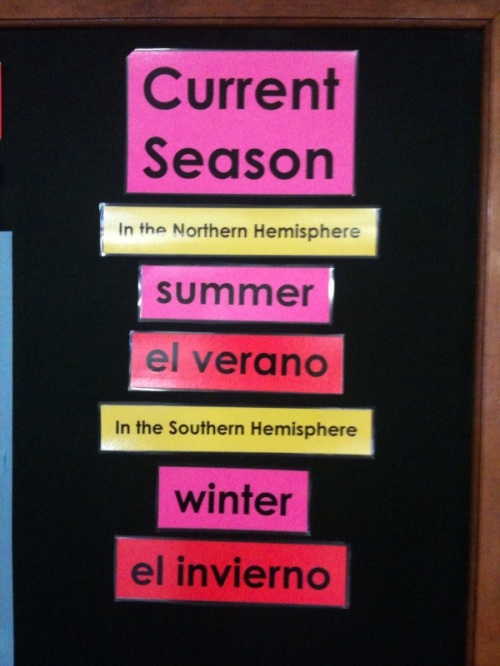It took me a while to learn that as a teacher, the to-do list is never-ending.
In college, I could get my entire to-do list done. Therefore, it didn’t matter which item I decided to tackle first, second, or last. In the end, everything got done.
When I started teaching, I was always adding something new to the list. There is always something to do that will increase the effectiveness of the classroom. Therefore, when I tried to use my time management strategies from college, I started to flounder.
I would pick the fun to-do items first. Like making posters. Within my misguided system, it didn’t matter what I did first, right? Since everything was going to get done?
Um, no. I quickly learned that not everything on the list was going to get done anymore. Therefore, I had to start prioritizing the list and tackling the most important items first.
As I get ready for my ninth year of teaching, I find myself being lured by my old paradigm: “Oh, you have plenty of time to get everything done! It’s only July! There’s no need to waste time strategically prioritizing the list. Just start tackling it.”
So I’m having an intervention with myself. I am here to prioritize this list (and re-prioritize it every time I add something new to it!).
- Revise scope and sequence for all subject areas (5 hours)
- Correlate curriculum with state standards (5 hours)
- Create grading plan (2 hours)
- Set up shelves with curricular materials (8 hours)
- Revise reading long-term plan (2 hours)
- Revise writing long-term plan (3 hours)
- Create lesson plans for Week One (2 hours)
- Plan reading diagnostic and tracking (4 hours)
- Plan writing diagnostic and tracking (2 hours)
- Create print-rich environment (3 hours)
- Create line order and closet assignments (1 hour)
- Create family survey (1 hour)
- Call families to invite them to the orientations (2 hours)
- Create long term plans for science and social studies (2 hours)
- Set up system for observation notes (1 hour)
- Set up system for conference notes (1 hour)
- Create leveled book baskets and corresponding templates for tracking progress (6 hours)
- Create writing piece tracking sheet (30 minutes)
- Figure out math facts sequence (2 hours)
- Make math facts flashcards for home use (3 hours)
- Refill math facts work (1 hour)
- Create sight words work (3 hours)
- Prepare spelling curriculum (with high frequency words added) (4 hours)
- Prepare personal dictionaries (1 hour)
- Create system for goal setting and add to the calendar (2 hours)
- Fix word study sequence (6 hours)
- Make pocket chart for breakfast cards (2 hours)
- Make pocket chart for name cards (2 hours)
- Set up pen pals (1 hour)
- Create classroom jobs (60 min.)
- Create binder for published pieces of writing (30 min.)
- Set up system for graphing daily goal completion (2 hours)
- Set up handwriting curriculum (4 hours)
- Create a long-term plan for the Practical Life curriculum (4 hours)
- Create a system for shelf-cleaning (30 min.)
- Create a long-term plan for independent science experiments (10 hours)
- Create a plan for incorporating yoga instruction and silence games to increase focus and concentration (2 hours)
- Create a plan for holiday research to be done as a family project at home (3 hours)
- Chop white paper for fractions and time (1 hour)
- Create a plan for incorporating music instruction (5 hours)
After school begins:
- Assign reading partners for class and reading buddies for cross-class exchange (1 hour)
- Plan reading buddy lessons (1 hour)
- Get portfolios ready (1 hour)
- Add each child’s picture to the Published Writing binder (30 min)
- Set up professional development tracker (15 min)
So that’s more than 100 hours of work before school starts (and I’m sure I’ll think of new things to add to the list constantly). I’ll basically need about 10, 10-hour days. That’s doable.




